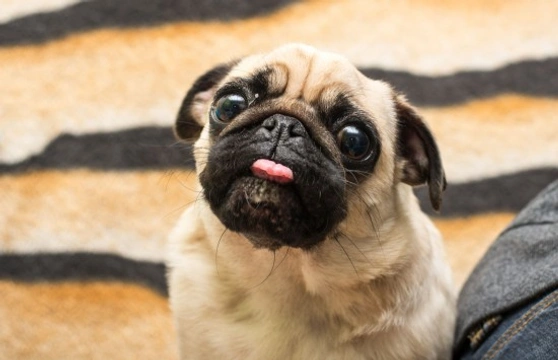Pets
Pets for studWanted petsBreedersAccessories & services
Knowledge hub
Support
Support & safety portal
Dogs And Their Physical Communication Methods
Because dogs do not have an evolved verbal language in the same way that people do, they have a whole range of other ways of getting our attention and communicating, both with people and with other dogs. While the meaning of what your dog is trying to communicate to you is not always obvious to us as people, used as we are to speaking largely with our voices and our own language of non verbal communications, we can still interpret the code of doggy speak, with a little foreknowledge!
Dogs are also fairly “honest” in terms of what they are “saying” with their various methods of physical communication, and once you have cracked the code, you will have a much better read on your dog, their moods and what they are trying to convey to you!
Read on to learn more about the many ways in which dogs communicate with people and other dogs physically without language.
Leaning
When you are sitting or standing still, does your dog like to lean up against your leg? This can have various different meanings, and the same is true when you spot your dog leaning against another dog in solidarity!
Dogs will often physically lean on another dog or their favourite person just to get close to them, gain reassurance and share body heat. It can be very comfortable for both parties involved, and usually only occurs between dogs and people or other dogs that they like and trust.
Leaning can also be used to display passive dominance over another dog or sometimes a person, if they use their physical size and weight to gently push you out of the way or get to a door or food bowl first.
Mouthing
Mouthing is the name given to the behaviour of your dog when they hold your hand or arm in their teeth, gently and without any aggression, or when they mock-chew on you in affection. This is a behaviour that dogs learn as puppies, when they are fully utilising all of their senses to explore the world around them. Mouthing is often a part of play, fun or mischief, and is always gentle and involves strong bite inhibition on the part of the dog.
The process of puppy mouthing is what teaches them this bite inhibition that they retain throughout later life; bite inhibition being the process by which dogs learn how much pressure they can apply with their jaws without causing pain or discomfort.
Nosing
Dogs utilise their sense of smell a lot, and will often sniff each other’s noses and put their noses very close to the source of the thing that they are trying to smell. As well as picking up the scent of the thing they are touching with their nose, nosing also elicits a tactile response in terms of the sensitive nose tissue getting a feel for the texture and material that they are touching.
Touching noses can also tell a dog a lot about what the other dog-or person- has recently eaten, so touching noses can often be thought of as saying “what did you have for dinner?” Because nosing involves very close proximity to the face of another dog or person, there is an element of trust involved, and the two parties touching noses will generally be friends.
Pawing
It is hard to ignore a dog that is trying to get your attention by pawing at you or placing a paw on you, and this makes pawing one of the most effective forms of canine physical communication! Pawing can be used to get your attention or to ask for something, but pawing can also be used to indicate dominance or to ask you or another dog to moderate your behaviour.
Pawing or physically pushing down on you or another dog or person with a paw is a way of putting you in your place-literally-by physically exercising passive dominance over you or another dog. It can also be used to ask another dog to calm down, if play is getting a bit too rowdy and the dog wants to take a step back for a break.
Licking
Licking is another favoured method of canine communication, and one that is often used to display affection. Dogs often like to lick people as our skin can be rather salty from sweat, but also as licking is a good way from your dog’s point of view of telling you that they like you and are happy with you.
Mutual grooming can form the basis of bonding between dogs, and dogs that live together and get on well will often lick each other in a grooming routine, to reinforce their bonds and share their scents.
Licking can also be submissive, and can have an element of appeasement to it too, and is one way of saying “I am not a threat to you” to a person or to another dog.



